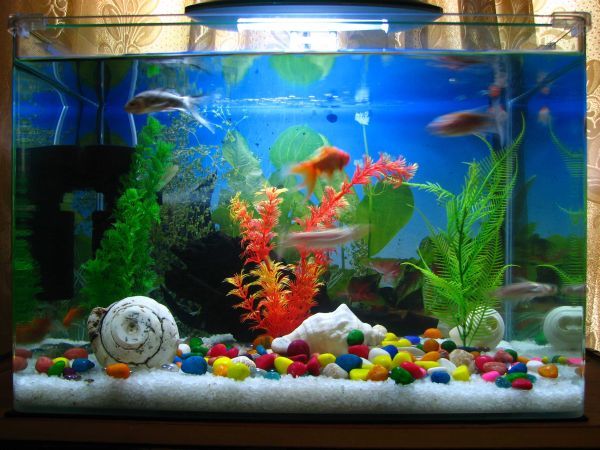Your Fish Tank Has Better Water Treatment Than DEP Requires For Your Drinking Water
DEP Fails To Require Cost Effective Granular Activated Carbon (GAC) Treatment
People Are Unknowingly Exposed To Over 500 Chemicals in Drinking Water
Dr. Tim’s Aquatics tells us all we need to know:
Activated carbon should be part of every aquarium filtration system. … The reason to use carbon is that it removes dissolved organic compound from the water. …Carbon will help you get the most enjoyment from your aquarium and provide a healthy environment for your fish. Good fishkeeping!
There is better information, more widely available, and that more people are aware of that is related to water treatment for their fish tank than their drinking water.
Far more people enjoy the benefits of activated carbon treatment for their fish tank than for their drinking water!
We spend more money on water treatment to provide our pet fish a healthy environment than DEP requires for our drinking water!!!
Absurd, you say?
Despite the fact that DEP KNOWS that our drinking water is polluted by over 500 chemicals, DEP does not require that our drinking water be treated with Granular Activated Carbon (GAC) to remove them.
Despite this knowledge, the Christie DEP even denied a petition to require that public water systems install Granular Activated Carbon to remove them.
Even the NJ Drinking Water Quality Institute agrees with Dr. Tim about the need for and benefits of granular activated carbon (GAC) treatment to provide a healthy environment for your kids! :
Activated Carbon
Activated carbon is commonly used to adsorb contaminants found in water. It is used to remove synthetic organic chemicals, natural organic compounds, and other compounds affecting taste and odor in drinking water treatment.
Granulated Activated Carbon (sic)
A review of the literature and several case studies indicated that Granulated Activated Carbon (GAC) (sic) is a common and effective (>90% removal) treatment for long-chain PFC contamination (WRF and Eschauzier et al). For example, GAC was found to be highly effective for PFOA removal at two public water systems, one in Ohio and one in West Virginia with the use of dual filter design, careful monitoring for breakthrough, and frequent filter changes.
The implications of this are obvious: millions of people are being exposed to hazardous chemicals, without their knowledge, and suffering avoidable health effects.
Jon Hurdle’s story in NJ Spotlight explains:
Michael Babcock, a Moorestown resident who has been pushing for the chemical to be regulated, said he wonders whether some developmental problems observed in his two-and-a-half year-old daughter could be linked to the contamination.
“My wife is pregnant, she’s drinking this water, what does that do to a one-cell fetus?” said Babcock, 44, a restaurant owner.
Pregnant women, the developing fetus, nursing mothers, young children, and other highly vulnerable groups of people are being needlessly exposed.
And never mind all that money that people spend on fish tank water – the GAC treatment for your drinking water costs less per month than 1 cup of coffee.
Of course, there are other important considerations, given that the people of the state are being exposed to hazardous chemicals without their knowledge – again captured by Mr. Hurdle’s story:
Even if there is no link between water contamination and his daughter’s health, Babcock said he and other townspeople should have been fully informed by state and local authorities about the condition of public water so they could make their own decision on whether to continue using it.
“I don’t like that anyone would take the decision making out of my hands or townspeople’s hands and not let us know what the hell’s in our water, and give us the choice of whether we want to drink it or not,” he said. “If we are drinking it, cooking with it, and giving it our kids, we should have that option and they didn’t give us that option.”
Sadly, this is not a joke.
As I wrote about legislation to respond to the Moorestown water contamination:
… people across the state – not just in Moorestown – are being exposed to unsafe levels of toxic chemicals known to be found in their drinking water without their knowledge and without any ability to take precautions to avoid that exposure.
This is simply wrong – it is an outrage that must end.

Thanks for the information. Like you said, we should be using water treatment on our potable water as well. It’s sad to me that my fish tank basically has cleaner water than the water I drink! I’m going to look into different water treatments a little bit more. Hopefully there’ll be one that I can implement in my home. http://www.valleypumpnw.com/water-treatment/